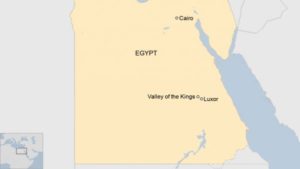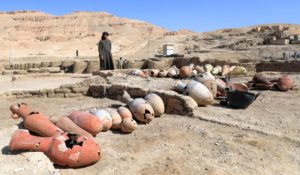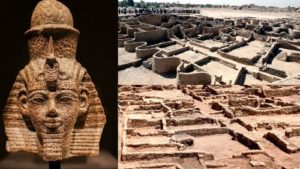The discovery of a 3,000-year-old city that was lost to the sands of Egypt has been hailed as one of the most important archaeological finds since Tutankhamun’s tomb.
On Thursday, Egypt announced the discovery of one of the most important finds since the unearthing of King Tutankhamun’s tomb almost 100 years ago in 1922. A 3000-year-old “lost golden city” from the era of 18th-dynasty king Amenhotep III, who ruled ancient Egypt from 1391 to 1353 B.C., was found in the southern province of Luxor, near some of the country’s best-known monuments. Isn’t that fascinating?According to the experts, the city is believed to have been used by Tutankhamun and his successor Ay during a period widely believed to be the golden era of ancient Egypt.
Tutankhamun’s coffin removed from tomb for first time
“The discovery of this lost city is the second most important archaeological discovery since the tomb of Tutankhamun,” Betsy Brian, professor of Egyptology at Johns Hopkins University in Baltimore, US, said.
She said the city would “give us a rare glimpse into the life of the ancient Egyptians” at the time when the empire was at its wealthiest.
The dig revealed a large number of valuable archaeological finds, such as jewellery, coloured pottery, scarab beetle amulets and mud bricks bearing seals of Amenhotep III.
The team began excavations on the west bank of Luxor near the Valley of the Kings, some 500 km (300 miles) south of the capital Cairo.
“Within weeks, to the team’s great surprise, formations of mud bricks began to appear in all directions,” Dr Hawass said in his statement.
“What they unearthed was the site of a large city in a good condition of preservation, with almost complete walls, and with rooms filled with tools of daily life.”
Now, seven months after the dig started, several areas or neighbourhoods have been uncovered, including a bakery, an administrative district and a residential area.
“Many foreign missions searched for this city and never found it,” said Dr Hawass, a former antiquities minister.


